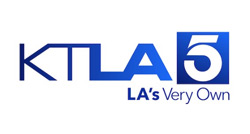Introduction: An Initial Definition
The difference between tax evasion and tax avoidance is an important one because “tax evasion” is criminal, but “tax avoidance” is not. There are cases where the difference between these is clear; but there are other, more subtle cases where things are not so cut-and-dry. This article helps elucidate the distinction.
A quote attributed to former Supreme Court Justice Louis D. Brandeis, who served on the Court from 1919 to 1939, illustrated the difference between tax evasion and tax avoidance with his famous “bridge tax” story:
I lived in Alexandria, Virginia. Near the Supreme Court chambers is a toll bridge across the Potomac. When in a rush, I pay the toll and get home early. However, I usually drive outside the downtown section of the city and cross the Potomac on a free bridge. The bridge was placed outside the downtown Washington, D.C. area to serve a useful social service: getting drivers to drive an extra mile to help alleviate congestion during rush hour.
If I went over the toll bridge and through the barrier without paying the toll, I would be committing tax evasion. However, if I drive the extra mile outside the city of Washington and take the free bridge, I am using a legitimate, logical and suitable method of tax avoidance, and I am performing a useful social service by doing so.
For my tax evasion, I should be punished. For my tax avoidance, I should be commended. The tragedy in life is that so few people know that the free bridge even exists.
Thus, avoiding the bridge tax by taking a different a road is fine; running past the toll without paying is not. This quote is helpful because it gives one an initial grasp on the distinction. But that grasp is only an initial one—for it is not sufficiently refined to help the taxpayer in all cases when he is doing one and not the other.
The Supreme Court took it a step further. The Court in Gregory v. Helvering, 293 U.S. 465 (1935) defined permissible tax avoidance as actions that “reduce, avoid, minimize, or alleviate taxes through wholly legitimate means.” The Court elaborated that “[t]he legal right of a taxpayer to decrease the amount of what otherwise would be his taxes, or altogether avoid them, by means which the law permits, cannot be doubted.”
Thus, to quote Judge Learned Hand, we may “arrange [our] affairs so that [our] taxes shall be as low as possible; [we are] not bound to choose that pattern which best pays the treasury. [We do not even have] a patriotic duty to increase [our] taxes.”
By contrast, tax evasion involves tax avoidance that is ordinarily accomplished via an element of deceit or concealment—and at times is patently an illegal means. So tax evasion involves an illegal means. But when is a means “illegal”?
That is where the rub is. The analysis of when a means—a tax plan, transaction, or a structuring of one’s affairs—is illegal will depend on whether it complies with the totality of the tax laws as currently enacted. That totality includes the Internal Revenue Code, Revenue Rulings, Revenue Procedures, Treasury Regulations, case law, etc. Indeed, the body of tax law is one of the largest areas of law, if not the largest.
It is not just black-and-white Code provisions that one must comply with; in addition, the taxpayer must navigate his or her way through various legal doctrines. The IRS and the courts subject one’s tax plan to various tests or legal doctrines, which have names like the “Economic Substance Test,” the “Sham Transaction Doctrine,” and they ask whether the tax strategy has “substance over form,” is done for a “business purpose,” and whether the transaction taken a whole may be collapsed into one “step” violating the “Step Transaction Doctrine.” We discuss these legal doctrines in more detail elsewhere on this website.
A Little Background: Where did these legal doctrines come from?
The judicial and statutory constraints on tax reduction strategies—the various legal doctrines just mentioned (“Economic Substance Test,” “Sham Transaction Doctrine,” “Step Transaction Doctrine”, etc.)—can all be traced back to the Supreme Court’s landmark holding in Gregory v. Helvering, 293 U.S. 465 (1935), which was an income tax case.
In that case, the taxpayer who formed a corporation mainly for the purpose of exploiting the “tax free reorganization” provisions in order to avoid gain recognition on a planned subsequent sale of stock to be transferred to the newly formed corporation. The IRS argued that in economic substance there was no business reorganization, and thus that the taxpayer was masking the true economic realities with a legal form as though a tax free reorganization occurred (thus lowering her income tax liability).
The Supreme Court agreed with the IRS. The Court noted that the taxpayer was in compliance with every element required by the Internal Revenue Code, and thus a statutory reorganization was achieved; moreover, the Court noted that the motive of the taxpayer to avoid tax (in and of itself) did not render impermissible what the reorganization statute clearly allowed.
What was the problem, then? The Court focused on whether what was done, apart from the tax motive, was the thing that the statute intended. The Court answered that question in the negative, and held that reorganization was not accomplished—that it was merely “a transfer of assets by one corporation to another in pursuance of a plan having no relation to the business of either.” Therefore the Court “unwound” the taxpayer’s transaction, and the Court held she owed tax.
The various legal doctrines are discussed in more detail on this website.













